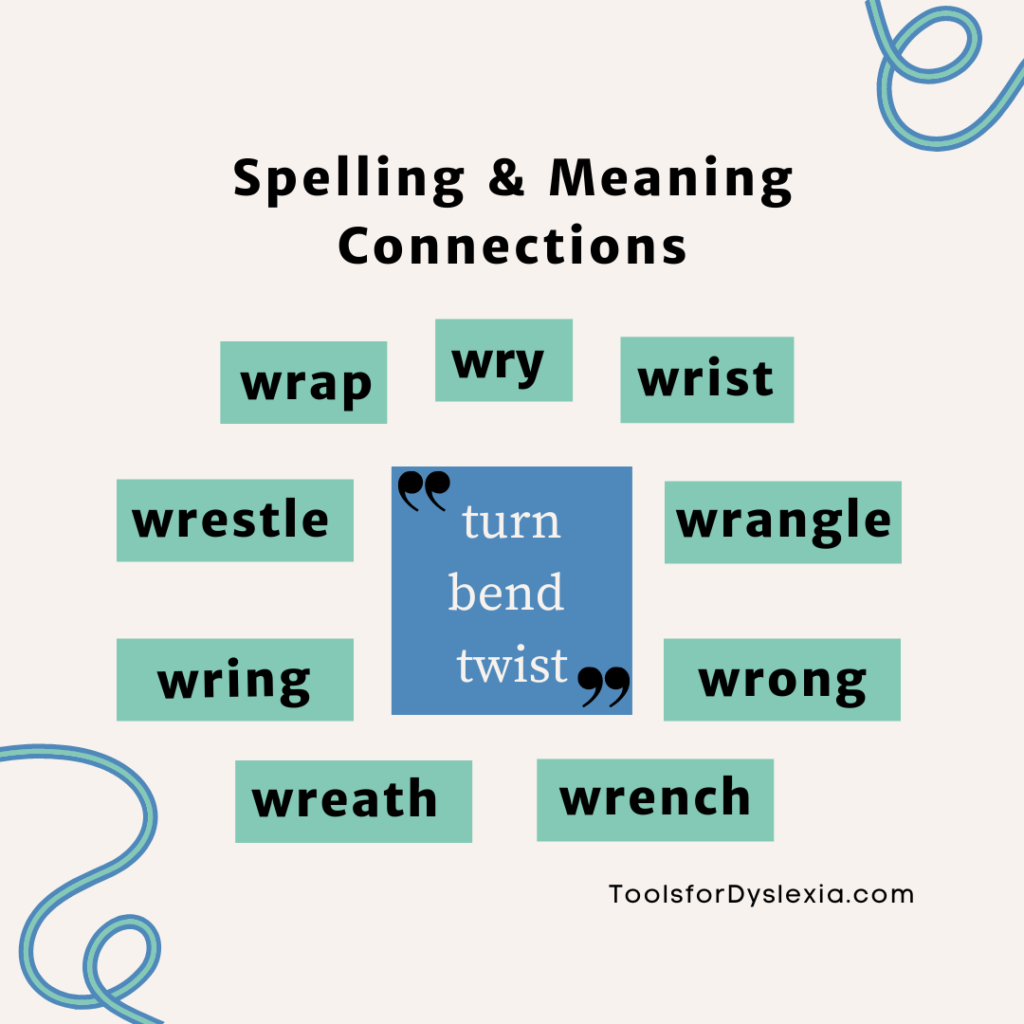Making Sense of the WR Digraph

“We don’t even say the <w>. Why do we have this <wr> digraph?” Sometimes students are frustrated with the <wr> consonant digraph.
Recognizing a Digraph
Students may not know about digraphs. What is a digraph? This word can be analyzed as: <di> “two” + <graph> “something written”. I explain digraphs, saying it’s two letters pronounced as one sound.
Sometimes programs talk about silent letters with digraphs like <wr>, but I’m not sure that’s necessary. Do we describe <sh, wh, th, ch> with a discussion of silent letters? No. <Wr> is a digraph. We might think of one letter of a digraph representing the phoneme (sound), but it’s still a digraph spelling a phoneme.
Pronunciations Evolve
Every chance we have to learn about the history of our spelling system, we become better informed to teach our students.
Check out Etymonline.com’s entry for <wr>.

When we share this entry, students can see that before the Modern English period (c.16th century), English speakers pronounced both the /w/ and the /r/. At that time, <w> <r> were not a consonant digraph, but two adjacent graphemes (letters).
That surprising information is helpful because our brains tend to hang on to stories. Maybe this will help your students remember this digraph. It also shows them that the spelling system makes sense. The <w> is there for a reason.
The way spelling and pronunciation evolved over the centuries is one of my favorite types of discoveries. It’s exciting to learn! Then, we can make sense of what we’ve misunderstood as crazy, random spelling.
Why Hasn’t the <WR> Digraph Changed with our Pronunciation?
Spelling reveals meaning. It also reveals meaning connections between words. Consider how changing the spelling for pronunciation differences would impact written communication. Of course, we could not just change the spelling for every dialect of English speaker.
The <wr> spelling also distinguishes some homophones. These words have different spellings and meanings but they are pronounced the same.
- wring ring
- wry rye
- wrap rap
- wretch retch
Back to WR’s Twisted Connections
Consider how these words’ meanings connect to “turn, bend, twist”. Talk about these with your students and look them up.
wrap
wrestle
wring
wreath
wrist
wrench
wrong
wrangle
wry
writhe
wriggle
wrinkle
wreck
Do All <WR> Digraph Words Mean “Turn, Bend, Twist”?
A wren is a bird with no connection to “turn, bend, twist”.
Wretch originally meant a stranger, but has come to mean a miserable person, whether familiar or not.
When we write, we twist, bend, or turn our hand or the writing instrument. But it’s not etymologically related to the same root.
As anyone who’s seen a car accident knows, a wreck often results in twisted metal. However, it doesn’t come from the same root either.
Isn’t it interesting that we can see the sense of “turn, bend, twist” in write and wreck regardless of their origins? It’s kind of satisfying to notice similarly spelled words which have a clear connection in meaning even though they’re not etymologically related.
Teaching Students About the <WR> Digraph
When this spelling comes up for my students, we brainstorm other words with the spelling. We review what a digraph is. Sometimes we refresh their memory with a few other consonant digraph examples.
We talk about the meaning of the <wr> word that started our discussion, the modern usage and historical meanings. Then we look at the other <wr> words we came up with. Spelling them as a simple base and with suffixes extends their familiarity with each word family. Often students begin noticing more of them when reading so we add to our list.
When students know we’re working on <wr> or any other specific spelling, it’s easy to spell those words. They get the idea that the /r/ is going to be spelled with <wr>. And we want it to be easy at first.
It’s also important to practice the spelling in sentences with some words that aren’t spelled with our target concept. For example, “A rap song came on while we wrapped the gifts.” There aren’t a ton of <wr> bases that students will regularly use. But it’s important to know it’s one of the ways to spell /r/. It’s not irregular, just another spelling.
There is no rule for spelling /r/ with the <wr> digraph versus the single letter <r>. Spelling these words in phrases and sentences and talking about the meaning is critical. Help them think about the meaning. Model thinking out loud and then remind them to do the same. We continuously create spelling experiences, and their accurate spelling develops from those experiences.


